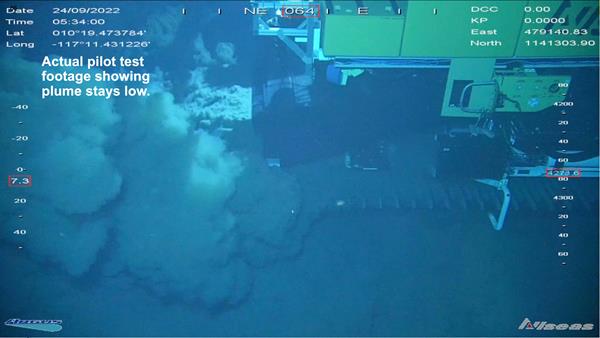NORI says environmental impact of seafloor mining less than feared


Nauru Ocean Resources (NORI), a subsidiary of The Metals Company (NASDAQ: TMC), has begun sharing emerging data on the impacts of seafloor sediment plumes one year after its 2022 test mining campaign. Verified by testing, NORI says the sediment forms a plume that hugs the seafloor and does not loft into the water column to be transported long distances.
TMC holds exploration and commercial rights to three areas in the Clarion Clipperton zone of the Pacific Ocean between Mexico and Hawaii. NORI is assessing the potential of mining nodules of critical minerals from the seafloor. So far about 3,000 tonnes of nodules have been collected.
During the period of nodule collection in 2022 NORI worked with DHI Water and Environment, experts on sedimentation modelling, to set up a plume monitoring study. Over 50 assets and marine sensors were deployed over the 4 x 2 km test field. They collected data on all aspects of plume dynamics, concentration, and dispersal from which DHI generated a verified plume model.
Based on laboratory predictions and field observations by other contractors, the evidence shows that the sediment plume at the seafloor is low-lying. The dispersal of the mud is influenced by gravity and the contours of the seafloor, not by ocean currents, TMC says.
“Models put forward by some activist groups claiming a vast area of impact are undermined by their lack of appreciation that the benthic plume forms a turbidity current spreading under its own weight away from the collector tracks, underlining the importance of investing in the science before engaging in speculation,” said NORI environmental manager Dr. Michael Clarke.
Seafloor mining is a much-debated topic. Only legislators in Norway support the enterprise. Environmental groups and NGOs are opposed. Greenpeace members recently occupied the NORI vessel until a Dutch court ordered them off.
The Metals Company is planning to begin deep sea mining by late-2025.
Learn more at www.Metals.co.
Comments
Alsir
Good news, I am interested in this topic, because we have Metalliferous sediments (Atlantis II Deep) located in the central Red Sea between Saudi Arabia and Sudan